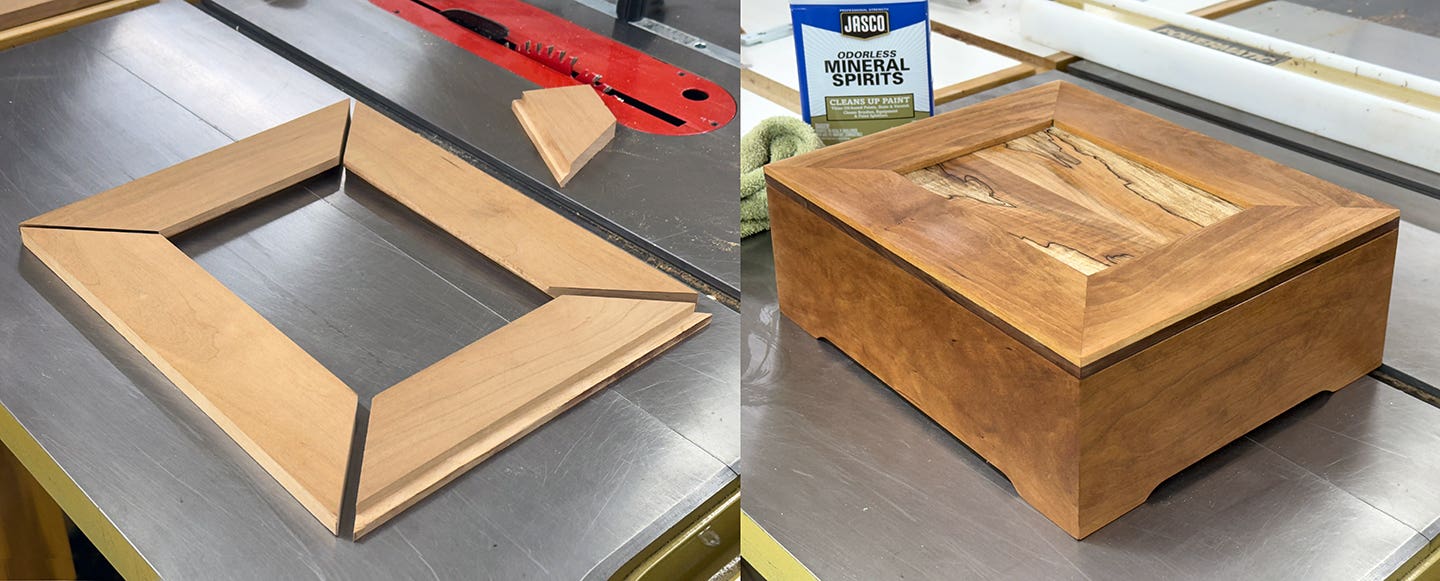Patience is key with green paint strippers
Not counting the use of heat or lye, which are both damaging to furniture because they can lift veneer and loosen joints, methods for removing old paint and finish from…
Not counting the use of heat or lye, which are both damaging to furniture because they can lift veneer and loosen joints, methods for removing old paint and finish from furniture have gone through at least four distinct periods.
Before solvents became widely available, coatings were removed by scraping, often with glass used like we use scrapers or by sanding after sandpaper became available.
The first active solvent widely used for stripping was benzene. It was cheap and fairly effective and it was sometimes combined with other solvents to make commercial strippers.
By the early 1970s, however, benzene was determined to be carcinogenic. It was taken off the consumer market and replaced as a stripping solvent by methylene chloride, which is more expensive, but also more effective. That is, it’s stronger and faster-acting.
Other solvents were also used in combinations to make less expensive (and less effective) strippers. These include acetone, methyl ethyl ketone, toluene, xylene and methanol. Sometimes, these solvents were combined with methylene chloride to reduce costs. All of these solvents are inflammable, while methylene chloride is not.
Each of these strippers is still widely available and easily recognized by the packaging — in metal containers. High-percentage methylene-chloride strippers are noticeably heavier than the multisolvent strippers and are labeled “non-flammable,” so they are easy to recognize. (Manufacturers supplying the professional refinishing trade often package their methylene-chloride strippers in large thick-plastic containers.)
In the mid-1980s, methylene chloride came under scrutiny as a possible human carcinogen. The evidence for this was weak and is still in dispute. But the doubt created, plus the flammability and toxicity of the other solvents used in strippers, was enough to create a market for an entirely new category of paint and finish removers with reduced toxicity.
It isn’t that these replacement solvents are so less toxic. It’s that they evaporate so much slower (remaining wet on the wood for up to a day or two) that there’s plenty of time for the air in a room to turn over many times before the solvent vapors reach toxic levels.
The reduced strength and speed of these replacement solvents is reflected in the packaging. Every brand I’ve seen is packaged in a plastic container.
Alternatives
The pioneers in this new category were Safest Stripper and Wood Finisher’s Pride. You might remember them from the early 1990s. Their introduction was accompanied by a great deal of advertising, focused primarily on replacing methylene chloride, which was prominently branded a carcinogen.
Safest Stripper was based on dibasic esters (DBE): dimethyl adipate and dimethyl glutarate. These solvents are often used in so-called “safe” or “green” cleaners, including graffiti and paint-spatter removers. When used alone, DBE is often combined with water.
Wood Finisher’s Pride was based on n-methyl-pyrrolidone (NMP). This solvent is stronger (faster) and more expensive than DBE.
The flurry of advertising created enough interest for many additional companies to enter the market with their own versions of alternative strippers, some combining NMP with DBE. It got to the point that every paint store and home center stocked many brands.
Then, fairly suddenly, this entire category of strippers almost disappeared from the shelves, leaving only Citristrip, an orange-colored gel, widely available. What happened?
In my opinion, alternative strippers disappeared because of a major marketing mistake. Every brand exaggerated the time it took for their stripper to work. That is, they claimed much faster results than the actual time it took.
Manufacturers chose to compete with the speed of methylene chloride, which they couldn’t legitimately do, instead of promoting ease of use. Instead of having to fight the rapid evaporation rate of the traditional strippers, the consumer could relax, be patient and eventually remove all coats with just one application of stripper.
The exaggerated claims got strippers packaged in plastic with the reputation of “not working.” Customers complained to store clerks and store clerks warned potential customers. The market dried up.
This situation continued until recently when “green,” referring to environment and health, entered the marketing vocabulary. Terms such as “biodegradable,” “non-toxic,” “water-based,” “earth-friendly,” “no harsh fumes,” “soy-based” and “citrus” took on strong marketing clout. (Soy and citrus are misleading because they don’t refer to the active ingredient, which is NMP).
Alternative strippers fit many of these terms well, so manufacturers reentered the market, often with newly labeled products showing lots of green.
Exaggerated working times and over-the-top hyperbole didn’t disappear, but the bet is that consumers are now so desirous of avoiding bad smelling, irritating and flammable solvents that they will use these strippers anyway.
Do they work?
The question is: Do they work adequately enough to be legitimate replacements for methylene chloride and flammable-solvent combinations? The answer is that they do. They just take considerably longer on most coatings.
It’s important to remember that coatings react differently to stripping solvents, no matter how fast or slow they are relative to others. For example, shellac and lacquer dissolve fairly quickly and become a “gunk” that is easy to wipe off (though not so quickly with DBE). Varnish, oil paint and usually latex paint swell and blister. Oil-based polyurethane and two-part, high-performance finishes have their bonds to the substrate broken so you can scrape them off.
Summing up, green paint and varnish removes have a number of things going for them. They are considerably less irritating to breathe. They are generally less damaging to the environment and they are easy to use if you give them time to work.
On the other hand, some contain a lot of water (and might even be promoted for it). Water raises the grain of the wood and causes steel wool to leave rust marks on the wood (so use a synthetic pad instead). Much worse, water can lift veneer if left in contact for an extended period, especially on old furniture glued with animal-hide glue.
Also, the slow-working advantage becomes a disadvantage if you are in a hurry. You have to allow considerably more time than you might be used to with strippers in metal cans.
This article originally appeared in the January 2016 issue.







